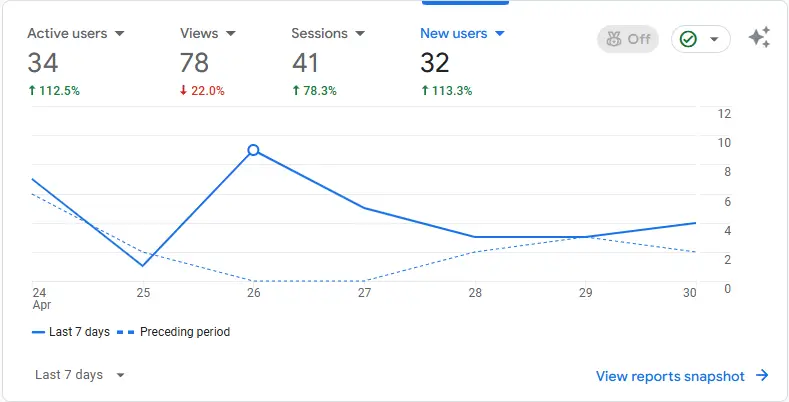How Does SEO Work

SEO stands for Search Engine Optimization, but don’t let the fancy name throw you off. It’s basically the process of helping your website show up when people search for things on Google. Not just any people — the ones already looking for exactly what you offer.
You know when you Google something like “plumber near me” or “best hiking trails in Clear Lake”? The websites that pop up first didn’t get there by accident. They earned that spot with good SEO.
At its core, SEO is about getting found — by the right people, at the right time. Instead of chasing customers, you’re setting up your online presence so they can find you. Like putting your shop on the busiest street in town instead of in some random back alley.
And the best part? Once it starts working, it keeps working — even when you’re asleep or out sipping wine somewhere quiet.
How Search Engines Actually Work
Before you can win at SEO, it helps to know how the game is played. Search engines like Google are basically giant answer machines. You type in a question, they dig through billions of pages to find what they think is the best one.
Here’s the basic flow:
- Crawling: Google sends little bots (called crawlers) to explore the internet and find new pages.
- Indexing: Those pages get stored in a giant library — the index — where Google keeps track of what’s on each one.
- Ranking: When someone searches for something, Google sorts through its index and shows results based on what it thinks is the most useful and trustworthy.
It’s not just about keywords either. Google looks at how fast your site loads, whether it works on phones, how long people stay on it, what other websites say about you — and dozens of other signals.
The goal? Show the most relevant, helpful content first. If your website checks those boxes, you climb higher. If not, you stay buried.
The Three Pillars of SEO
SEO isn’t one thing. It’s more like a three-legged stool. You need all three legs solid if you want the whole thing to stand up.
Those legs are:
- What’s under the hood of your site (technical stuff),
- What’s actually on the page (content and structure),
- And what others say about you online (links and mentions).
If one’s missing, the whole setup gets wobbly. But when they work together, that’s when Google starts paying attention — and your rankings start moving.
We’ll break each one down next, starting with the technical side.
Technical SEO

This is the part most people don’t see — and usually don’t think about — but it’s what lets search engines actually access your site in the first place.
Imagine building a beautiful house, but forgetting to install a front door. Doesn’t matter how nice it is inside if no one can get in. That’s what happens when your site isn’t technically sound.
Some key things that fall under technical SEO:
- Site speed: If your site loads like it’s stuck in 2004, people bounce — and Google notices.
- Mobile-friendliness: Your site has to work on phones. No exceptions.
- Crawlability: You need a sitemap, clean code, and zero roadblocks for Google’s bots.
- HTTPS: Basic security — if you don’t have it, it’s a red flag.
- No broken stuff: Broken links, missing pages, redirect loops — they all send bad signals.
Technical SEO is like laying the foundation. Nobody brags about it, but without it, nothing else works.
On-Page SEO
This is what most people think SEO is — and they’re not entirely wrong. On-page SEO is everything that lives right there on your website: the words, the structure, the way it’s laid out for humans and search engines.
It starts with good content — the kind that answers a real question or solves a real problem. But content alone isn’t enough. Google also looks at how it’s organized.
Here’s what matters:
- Page titles and headings: These tell Google (and readers) what the page is about.
- Keywords: Not stuffing them — just using the right ones in the right places.
- Internal links: Helping people (and bots) move through your site.
- Image alt text: So Google knows what your images are showing.
- Clear structure: Paragraphs, bullet points, subheadings — anything that makes reading easier.
It’s all about creating pages that are both useful to people and understandable to search engines. That balance is what moves the needle.
Off-Page SEO
This is what happens off your website — but it still affects your rankings in a big way. Mainly, we’re talking about links. When another website links to yours, it’s like a little vote of confidence in Google’s eyes.
But not all votes are equal. A link from some random blog? Nice, but no fireworks. A link from a respected site in your industry? That’s gold.
Off-page SEO includes:
- Backlinks: The more high-quality sites linking to you, the more credible you look.
- Local citations: Listings on directories like Yelp, BBB, or local chambers of commerce.
- Reviews: Especially on platforms like Google Business. Google loves businesses people trust.
- Social signals: Likes and shares don’t directly boost rankings, but they help get your content in front of more eyes — which can lead to links.
Think of off-page SEO as reputation building. Google wants to recommend the “popular kid” — not the one talking to himself in the corner.
Keywords: The Fuel of SEO

Keywords are the words and phrases people type into Google. Simple as that. They’re the bridge between what someone wants and the content you’ve created. If you’re not using the words your audience is searching for, you’re basically invisible.
But here’s the trick — it’s not just about using keywords. It’s about understanding intent. Someone searching “AC repair cost Rancho Cordova” wants something very different than someone typing “how air conditioning works.”
There are two main types:
- Short-tail: One or two words, super broad — like “plumber.” Tons of competition.
- Long-tail: More specific, like “emergency plumber Citrus Heights.” Less traffic, but higher odds of turning into a real lead.
The goal is to use keywords naturally — in your titles, headings, body text, even image filenames. Not by stuffing them in like you’re trying to cheat the system. That used to work. Now it just makes your site look spammy and desperate.
Content is What Gets You Found

If keywords are the fuel, content is the engine. It’s what actually shows up in search results and gives people a reason to click — and stick around.
But not just any content. Google’s gotten smart. It looks for content that’s helpful, relevant, and trustworthy. Basically: does this page actually answer the question someone typed in?
That’s why blog posts, service pages, FAQs, and location pages all matter. They each cover a different angle of what your audience is looking for.
Here’s what solid content usually has:
- A clear focus (not a rambling mess)
- Real value (teach, explain, solve)
- Good formatting (headings, bullet points, short paragraphs)
- Your voice (because no one wants to read something that sounds like it was written by a robot)
And here’s the best part: good content keeps working. You write it once, and it can bring in leads for months — sometimes years — without lifting another finger.
SEO Takes Time (and That’s a Good Thing)

One of the first things people ask is, “How long until this works?” And the honest answer is — it depends. Usually, you’re looking at three to six months before things really start to move. Sometimes quicker, sometimes slower, depending on your niche and how competitive it is.
That can feel frustrating if you’re used to things like ads, where you pay today and get clicks tomorrow. But SEO works differently. It builds momentum. Google needs time to crawl your site, index your pages, test how people interact with them, and decide where you fit in the bigger picture.
But here’s the trade-off: once you start ranking, the payoff keeps coming. You’re not constantly paying for every click. You’re not chasing attention. You’ve built something that works in the background, drawing in the right people day after day.
It’s like planting a fruit tree instead of buying fruit at the store. You wait a little longer, but once it starts producing, it just keeps going.
Measuring SEO

If you don’t track it, you’re just guessing. Tools like Google Search Console and Analytics show you what’s actually happening — how many people are visiting, what they’re clicking, and where they’re coming from.
But it’s not just about traffic. The real question is: are those visitors turning into calls, bookings, or sales? That’s what matters. SEO isn’t just about getting seen — it’s about getting chosen.

